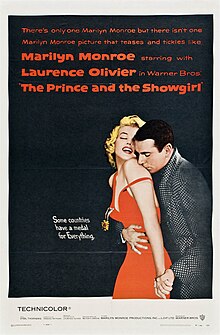
Marilyn Monroe was an American actress and model. Known for playing comic "blonde bombshell" characters, she became one of the most popular sex symbols of the 1950s and early 1960s, as well as an emblem of the era's sexual revolution. She was a top-billed actress for a decade, and her films grossed $200 million by the time of her death in 1962. Long after her death, Monroe remains a pop culture icon. In 1999, the American Film Institute ranked her as the sixth-greatest female screen legend from the Golden Age of Hollywood.

Laurence Kerr Olivier, Baron Olivier, was an English actor and director who, along with his contemporaries Ralph Richardson and John Gielgud, was one of a trio of male actors who dominated the British stage of the mid-20th century. He also worked in films throughout his career, playing more than fifty cinema roles. Late in his career he had considerable success in television roles.

Zoë Wanamaker is an American-British actress who has worked extensively with the Royal Shakespeare Company and the National Theatre. Wanamaker was appointed a Commander of the Order of the British Empire in 2001 by Queen Elizabeth II. She has received numerous accolades including a Laurence Olivier Award and nominations for three BAFTA Awards, and four Tony Awards.
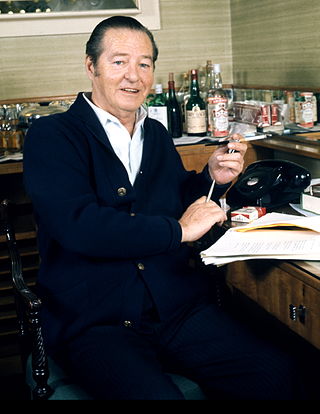
Sir Terence Mervyn Rattigan was a British dramatist and screenwriter. He was one of England's most popular mid-20th-century dramatists. His plays are typically set in an upper-middle-class background. He wrote The Winslow Boy (1946), The Browning Version (1948), The Deep Blue Sea (1952) and Separate Tables (1954), among many others.
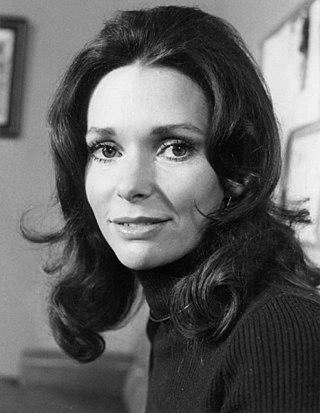
Susan Elizabeth Strasberg was an American stage, film, and television actress. Thought to be the next Hepburn-type ingenue, she was nominated for a Tony Award at age 18, playing the title role in The Diary of Anne Frank. She appeared on the covers of LIFE and Newsweek in 1955. A close friend of Marilyn Monroe and Richard Burton, she wrote two best-selling tell-all books. Her later career primarily consisted of slasher and horror films, followed by TV roles, by the 1980s.
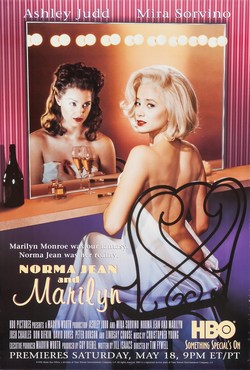
Norma Jean & Marilyn is a 1996 American biographical drama television film directed by Tim Fywell, based on the 1985 book Goddess, the Secret Lives of Marilyn Monroe by Anthony Summers. The film stars Ashley Judd as Norma Jean Dougherty and Mira Sorvino as Marilyn Monroe. It premiered on HBO on May 18, 1996.
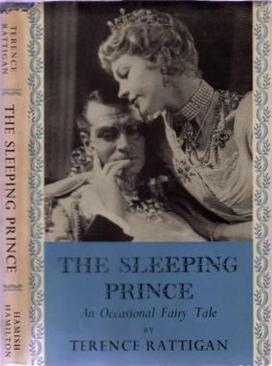
The Sleeping Prince: An Occasional Fairy Tale is a 1953 play by Terence Rattigan, conceived to coincide with the coronation of Elizabeth II in the same year. Set in London in 1911, it tells the story of Mary Morgan, a young actress, who meets and ultimately captivates Prince Charles of Carpathia, considered to be inspired by Carol II of Romania.

On the evening of August 4, 1962, American actress Marilyn Monroe died at age 36 of a barbiturate overdose inside her home at 12305 Fifth Helena Drive in Brentwood, Los Angeles, California. Her body was discovered before dawn the following morning, on August 5. Monroe had been one of the most popular Hollywood stars during the 1950s and early 1960s, and was a top-billed actress for the preceding decade. Her films had grossed $200 million by the time of her death.
Milton H. Greene was an American fashion and celebrity photographer and film and television producer, best known for his photo shoots with Marilyn Monroe.
Roger Kemble Furse was an English painter who worked as a costume designer and production designer for both stage and film.

Richard Cameron Wattis was an English actor, co-starring in many popular British comedies of the 1950s and 1960s.

Marcus Andrew Sinden is an English actor and film & theatre director and producer.

The Girl Who Came to Supper is a musical with a book by Harry Kurnitz and music and lyrics by Noël Coward, based on Terence Rattigan's 1953 play The Sleeping Prince. The musical premiered on Broadway in 1963.

Marilyn Monroe was an American actress who appeared in 29 films between 1946 and 1961. After a brief career in modeling she signed short-term film contracts, first with 20th Century Fox, then Columbia Pictures, and appeared in minor roles for the first few years of her career. In 1950, she made minor appearances in two critically acclaimed films, The Asphalt Jungle and All About Eve. The parts in the two films were against many of the roles into which she was typecast, that of the dumb blonde. Margot A. Henriksen, her biographer with the American National Biography, considers the typecast "an unfair stereotype that bothered her throughout her career".
The 11th British Academy Film Awards, given by the British Academy of Film and Television Arts, were held on 6 March 1958, to honor the best national and foreign films of 1957.
Colin Clark was a British writer and filmmaker who specialised in films about the arts, for cinema and television.

Blonde is a 2001 American made-for-television biographical fiction film on the life of Marilyn Monroe, with Australian actress Poppy Montgomery in the lead role. The film was adapted from Joyce Carol Oates's 2000 Pulitzer Prize finalist novel of the same name.
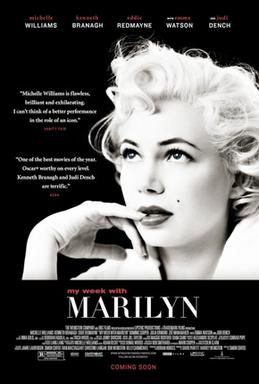
My Week with Marilyn is a 2011 biographical drama film directed by Simon Curtis and written by Adrian Hodges. It stars Michelle Williams, Kenneth Branagh, Eddie Redmayne, Dominic Cooper, Julia Ormond, Emma Watson, and Judi Dench. Based on two books by Colin Clark, it depicts the making of the 1957 film The Prince and the Showgirl, which starred Marilyn Monroe (Williams) and Laurence Olivier (Branagh). The film concerns the week during the shooting of the 1957 film when Monroe was escorted around London by Clark (Redmayne), after her husband Arthur Miller had returned to the United States.
A film of Macbeth with Laurence Olivier as director and in the lead role was a project for which Olivier was ultimately unable to gain financing.
Bombshell is an American musical with book by Patrik Komljenović, music by Marc Shaiman, and lyrics by Marc Shaiman and Scott Wittman based on the original fictitious musical from the first season of the NBC television series Smash. The songs include soulful jazz anthems and upbeat pop songs. Bombshell is the life story of Marilyn Monroe. It tells the story of the aspiring starlet who transforms herself into a worldwide sex symbol, including her early life and her alleged affair with American President John F. Kennedy. Despite the same name, and subject matter, this musical from SMASH is unrelated to the Off-Broadway musical from 2001 which ran at the Grove Street Playhouse.
